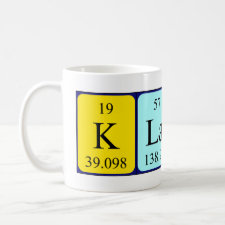
Authors: Yu C, Mosbach K
Article Title: Insights into the origins of binding and the recognition properties of molecularly imprinted polymers prepared using an amide as the hydrogen-bonding functional group.
Publication date: 1998
Journal: Journal of Molecular Recognition
Volume: 11
Issue: (1-6)
Page numbers: 69-74.
DOI: 10.1002/(SICI)1099-1352(199812)11:1/6<69::AID-JMR392>3.0.CO;2-I
Abstract: Molecularly imprinted polymers (MIPs) prepared using an amide hydrogen-bonding functional monomer (acrylamide) exhibited efficient enantiomeric recognition properties in both organic and aqueous media in the HPLC mode. The results indicate that the amide functional groups formed strong hydrogen-bonding interactions with the template molecule, and specific recognition sites were created within the polymer matrix during the imprinting process, When Boc-L-Trp was used as the template, an MIP prepared in a polar organic solvent (acetonitrile) using acrylamide as the functional monomer showed better enantiomeric recognition of Boc-Trp than the MIPs prepared in the same solvent using an acidic (methacrylic acid) or a basic (2- vinylpyridine) functional monomer or a combination of an acidic and a basic functional monomer (methacrylic acid + 2-vinylpyridine). Our results indicate that in organic media the degree of retention of the sample molecule an the imprinted polymer was controlled by hydrogen- bonding interactions between the sample molecule and the polymer, while in aqueous media it was determined to a considerable extent by hydrophobic interactions, In both media the shape, size and the nature of the hydrogen-bonding groups of the sample molecules were all important factors in determining the enantiomeric and substrate selectivity. In the aqueous media, however, the hydrophobicity of the sample molecules was also found to play an important role. (C) 1998 John Wiley & Sons, Ltd



Join the Society for Molecular Imprinting

New items RSS feed
Sign-up for e-mail updates:
Choose between receiving an occasional newsletter or more frequent e-mail alerts.
Click here to go to the sign-up page.
Is your name elemental or peptidic? Enter your name and find out by clicking either of the buttons below!
Other products you may like:
 MIPdatabase
MIPdatabase









